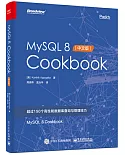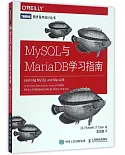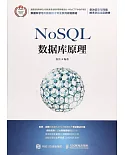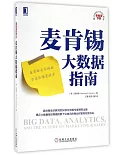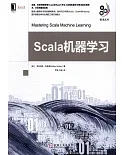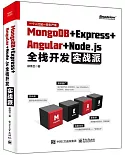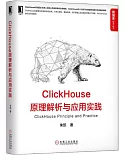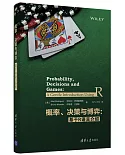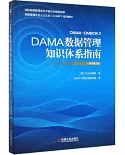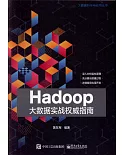1 The Worlds of Database Systems
1.1 The Evolution of Database Systems
1.1.1 Early Database Management Systems
1.1.2 Relational Database Systems
1.1.3 Smaller and Smaller Systems
1.1.4 Bigger and Bigger Systems
1.1.5 Information Integration
1.2 Overview of a Database Management System
1.2.1 Data-Definition Language Commands
1.2.2 Overview of Query Processing
1.2.3 Storage and Buffer Management
1.2.4 Transaction Processing
1.2.5 The Query Processor
1.3 Outline of Database-System Studies
1.4 References for Chapter 1
Ⅰ Relational Database Modeling
2 The Relational Model of Data
2.1 An Overview of Data Models
2.1.1 What is a Data Model?
2.1.2 Important Data Models
2.1.3 The Relational Model in Brief
2.1.4 The Semistructured Model in Brief
2.1.5 Other Data Models
2.1.6 Comparison of Modeling Approaches
2.2 Basics of the Relational Model
2.2.1 Attributes
2.2.2 Schemas
2.2.3 Tuples
2.2.4 Domains
2.2.5 Equivalent Representations of a Relation
2.2.6 Relation Instances
2.2.7 Keys of Relations
2.2.8 An Example Database Schema
2.2.9 Exercises for Section 2.2
2.3 Defining a Relation Schema in SQL
2.3.1 Relations in SQL
2.3.2 Data Types
2.3.3 Simple Table Declarations
2.3.4 Modifying Relation Schemas
2.3.5 Default Values
2.3.6 Declaring Keys
2.3.7 Exercises for Section 2.3
2.4 An Algebraic Query Language
2.4.1 Why Do We Need a Special Query Language?
2.4.2 What is an Algebra?
2.4.3 Overview of Relational Algeebra
2.4.4 Set Operations on Relations
2.4.5 Projection
2.4.6 Selection
2.4.7 Cartesian Product
2.4.8 Natural Joins
2.4.9 Theta-Joins
2.4.10 Combining Operations to Form Queries
2.4.11 Naming and Renaming
2.4.12 Relationships Among Operations
2.4.13 A Linear Notation for Algebraic Expressions
2.4.14 Exercises for Section 2.4
2.5 Constraints on Relations
2.5.1 Relational Algebra as a Constraint Language
2.5.2 Referential Integrity Constraints
2.5.3 Key Constraints
2.5.4 Additional Constraint Examples
2.5.5 Exercises for Secticn 2.5
2.6 Summary of Chapter 2
2.7 References for Chapter 2
3 Design Theory for Relational Databases
3.1 Functional Dependencies
3.1.1 Definition of Functional Dependency
3.1.2 Keys of Relations
3.1.3 Superkeys
3.1.4 Exercises for Section 3.1
3.2 Rules About Functional Dependencies
3.2.1 Reasoning About Functional Dependencies
3.2.2 The Splitting/Combining Rule
3.2.3 Trivial Functional Dependencies
3.2.4 Computing the Closure of Attributes
3.2.5 Why the Closure Algorithm Works
3.2.6 The Transitive Rule
3.2.7 Closing Sets of Functional Dependencies
3.2.8 Projecting Functional Dependencies
3.2.9 Exercises for Section 3.2
3.3 Design of Relational Database Schemas
3.3.1 Anomalies
3.3.2 Decomposing Relations
3.3.3 Boyce-Codd Normal Form
3.3.4 Decomposition into BCNF
3.3.5 Exercises for Section 3.3
3.4 Decomposition:The Good,Bad,and Ugly
3.4.1 Recovering Information from a Decomposition
3.4.2 The Chase Test for Lossless Join
3.4.3 Why the Chase Works
3.4.4 Dependency Preservation
3.4.5 Exercises for Section 3.4
3.5 Third Normal Form
3.5.1 Definition of Third Normal Form
3.5.2 The Synthesis Algorithm for 3NF Schemas
3.5.3 Why the 3NF Synthesis Algorithm Works
3.5.4 Exercises for Section 3.5
3.6 Multivalued Dependencies
3.6.1 Attribute Independence and Its Consequent Redundancy
3.6.2 Definition of Multivalued Dependencies
3.6.3 Reasoning About Multivalued Dependencies
3.6.4 Fourth Normal Form
3.6.5 Decomposition into Fourth Normal Form
3.6.6 Relationships Among Normal Forms
3.6.7 Exercises for Section 3.6
3.7 An Algorithm for Discovering MVD’s
3.7.1 The Closure and the Chase
3.7.2 Extending the Chase to MVD’s
3.7.3 Why the Chase Works for MVD’s
3.7.4 Projecting MVD’s
3.7.5 Exercises for Section 3.7
3.8 Summary of Chapter 3
3.9 References for Chapter 3
4 High-Level Database Models
5 Algebraic and Logical Query Languages
6 The Database Language SQL
7 Constraints and Triggers
8 Views and Indexes
9 SQL in a Server Environment
10 Advanced Topics in Relational Databases
11 The Semistructured-Data Model
12 Programming Languages for XML
Index











